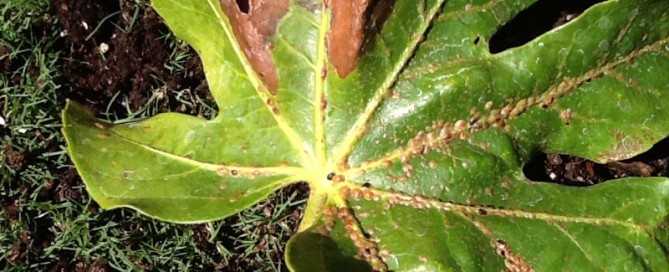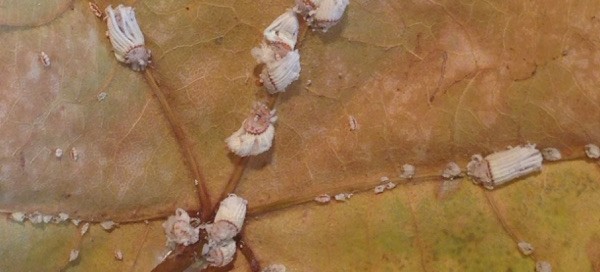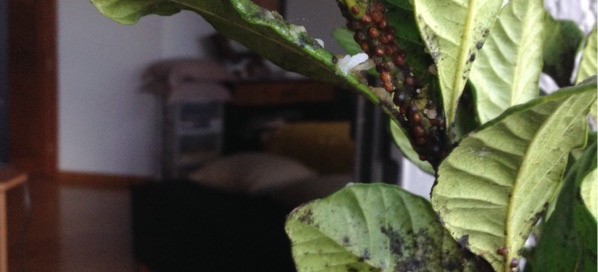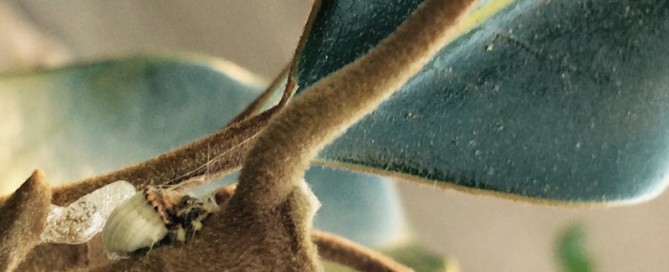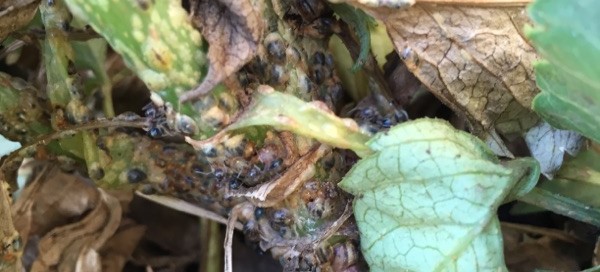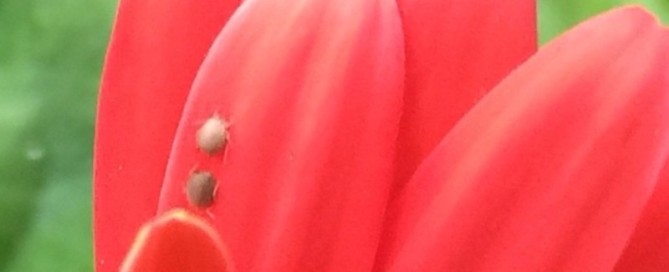Scale Infestation
This appears to be scale, a sap sucking insect that attaches itself to the leaves and stems. Wiping them off with a damp cloth can be effective if caught early. However, your infestation is quite severe. If you wish to undertake chemical control, spray the entire plant (especially the underside of the leaves) with a product labeled for scale control. Or try a systemic (Bayer 3-in-1 Advanced Insect Disease & Mite Control is one example). You should also prune off and dispose of the most heavily infested parts of the plant to physically remove as many insects as possible. This looks like a Fatsia, which is quite prone to scale. Here is a link that you might find helpful: http://www.ipm.ucdavis.edu/PMG/PESTNOTES/pn7408.html
